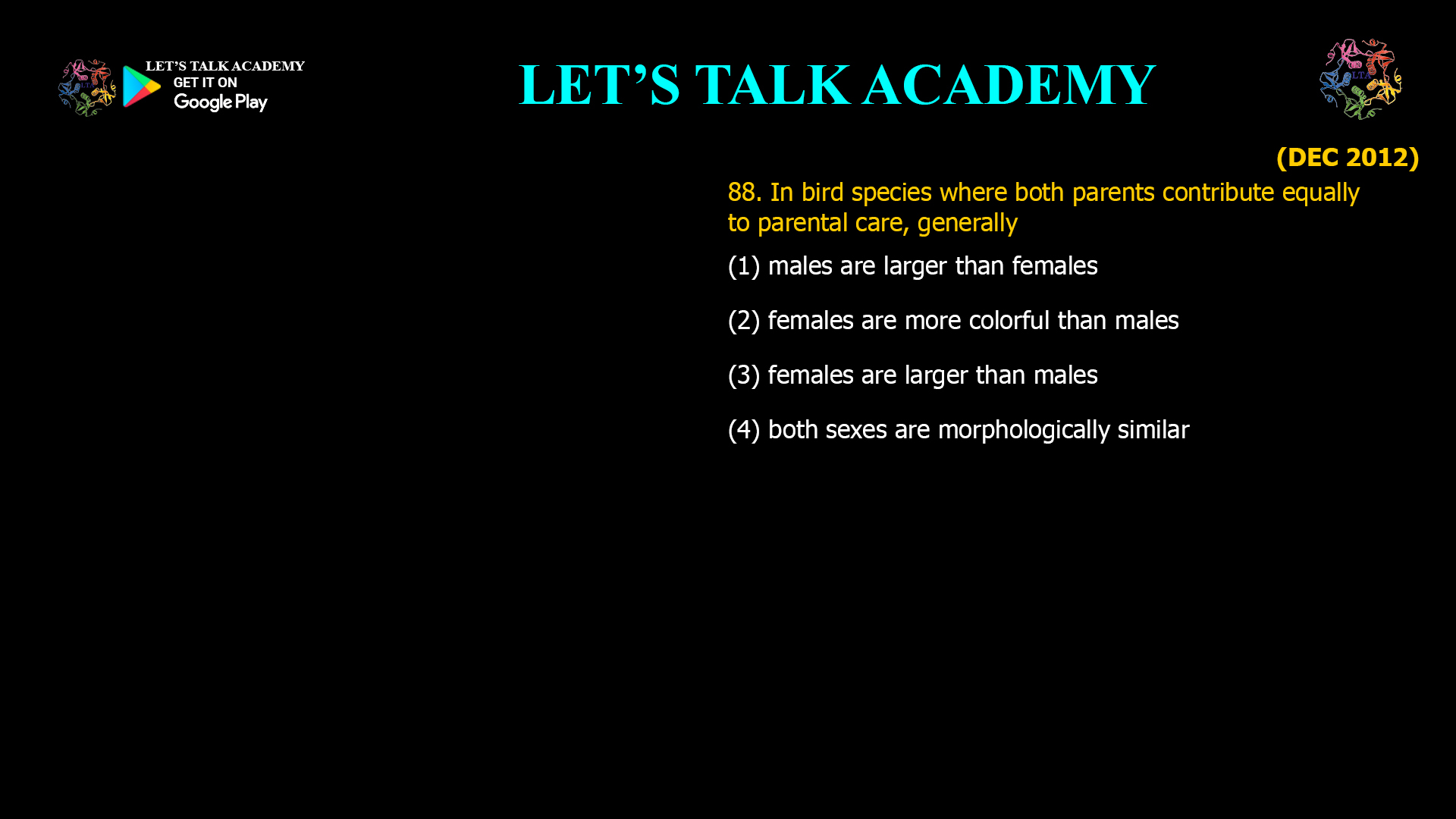- In bird species where both parents contribute equally to parental care, generally
(1) males are larger than females
(2) females are more colorful than males
(3) females are larger than males
(4) both sexes are morphologically similarBiparental Care: The Norm in Birds
Birds are unique among vertebrates for the prevalence of biparental care. In fact, studies show that in the majority of bird species, both parents share responsibilities such as nest building, incubation, and feeding the young. This cooperation is especially common in passerines and many other groups, where the survival of altricial (helpless at hatching) chicks depends on the efforts of both parents.
Morphological Similarity: The Evolutionary Connection
In species where both sexes invest equally in parental care, there is little evolutionary advantage for one sex to be larger, more colorful, or more ornamented than the other. This is because:
-
Sexual Selection Pressure is Reduced: When both parents are needed for offspring survival, the intense sexual selection that drives differences (such as elaborate male displays or larger size) is diminished. Both sexes are under similar selection pressures for survival and effective parenting, leading to convergence in size, coloration, and shape.
-
Mutual Mate Choice: Since both males and females are invested in the success of the brood, mate choice may be mutual, further reducing the development of exaggerated traits in one sex.
Scientific Evidence
Large-scale analyses of thousands of bird species confirm that morphological similarity between sexes is strongly associated with equal parental care. In these species, sexual dimorphism (differences in size or color) is minimal or absent. Instead, both sexes share similar plumage, body size, and often, even behavioral roles during the breeding cycle.
Why Not the Other Options?
-
Males are larger than females: This is typical in species with strong male-male competition or polygynous systems, not in those with equal parental care.
-
Females are more colorful than males: This is rare and usually occurs in species with reversed sex roles or polyandry.
-
Females are larger than males: This pattern is seen in some raptors or shorebirds with female-biased roles, not in biparental care systems.
Examples from Nature
Many songbirds, doves, and seabirds exhibit biparental care and show little to no difference in appearance between males and females. Both parents are equally involved in feeding and protecting their chicks, and both look nearly identical to the untrained eye.
Conclusion
In bird species where both parents contribute equally to parental care, both sexes are morphologically similar. This pattern reflects the shared evolutionary pressures and mutual investment in offspring survival, minimizing the need for exaggerated traits in one sex. Morphological similarity is a hallmark of cooperation and partnership in avian life, highlighting the deep connection between behavior and physical form in the natural world
-




1 Comment
Kajal
October 13, 2025Morphological similarity